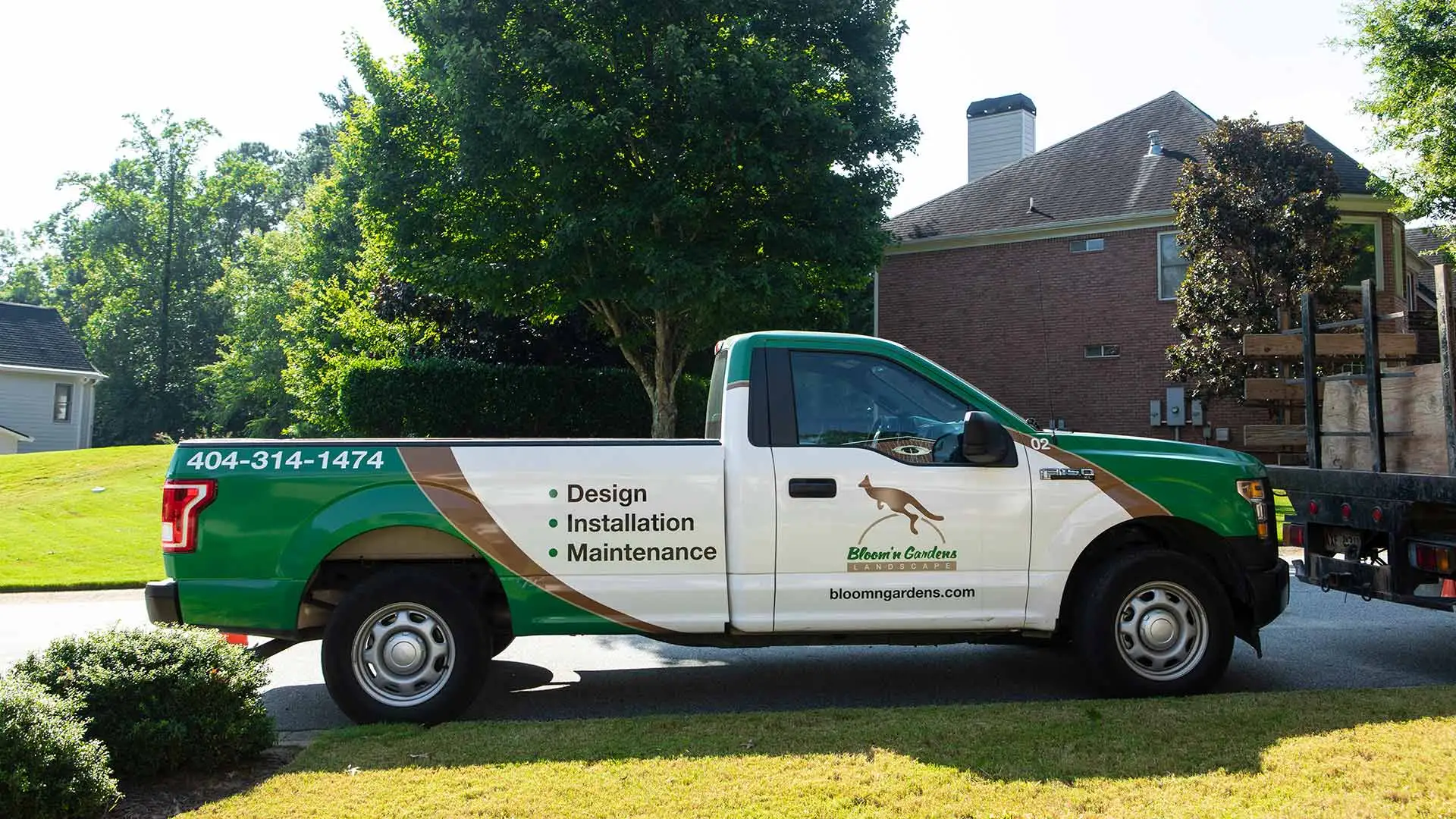 Many people ask me what is the secret to a great looking landscape. There are many things that comprise a good looking landscape. You could say the overall design aesthetic, the quality of the pruning, or the impact of the seasonal color. I would have to say they are factors, but I think one of the key ingredients that can take a landscape from good to great is a lush, thick green lawn. It has to be one of the best ways to enhance the overall look of your home and garden. That being said, one of the worst things you can do is to have too much of a good thing. What I mean by that is, use grass as an accent to frame your planting beds, don’t let it dominate your whole yard or else you risk becoming very hum drum. There’s no better part of the year that shows off a good looking stand of grass than April and May. At this point of the year, our fescue grass should look AMAZING! The warm season turfs like Bermuda and Zoysia are coming into their own and provide a beautiful backdrop to newly emerged leaves on the surrounding shrubbery. When trying to achieve the perfect lawn there are several factors to consider:
Many people ask me what is the secret to a great looking landscape. There are many things that comprise a good looking landscape. You could say the overall design aesthetic, the quality of the pruning, or the impact of the seasonal color. I would have to say they are factors, but I think one of the key ingredients that can take a landscape from good to great is a lush, thick green lawn. It has to be one of the best ways to enhance the overall look of your home and garden. That being said, one of the worst things you can do is to have too much of a good thing. What I mean by that is, use grass as an accent to frame your planting beds, don’t let it dominate your whole yard or else you risk becoming very hum drum. There’s no better part of the year that shows off a good looking stand of grass than April and May. At this point of the year, our fescue grass should look AMAZING! The warm season turfs like Bermuda and Zoysia are coming into their own and provide a beautiful backdrop to newly emerged leaves on the surrounding shrubbery. When trying to achieve the perfect lawn there are several factors to consider:
Right Turf in the Right Place
Ideal locations for grass include areas in full sun to light shade with fairly level or lightly sloping ground. Installing grass on steeply sloped areas or under thick trees, in deep shade, is highly discouraged. These areas spell Trouble, with a capital T. Not only will your grass struggle, it may be a safety hazard when maintaining it, as well. Warm season grasses such as Bermuda and Zoysia require full sun, areas that receive a bit of shade do better planted with a cool season grass, like fescue.
Cutting Your Lawn at the Right Height
Light requirements are not the only thing that separates Warm and Cool season grasses; mowing heights are different as well. Typically Fescue is cut longer at about 3” in height, whereas the warm season grasses do better when they are cut shorter around 1”-1 ½”. Practicing proper mowing heights limits the stress the grass is subjected to when the temperatures are warmer or when periods of fungal infection are present.
Feeding and Watering your Lawn
It is important to know how to properly feed your lawn and treat it for weeds. The two tasks are done at different times and if you are using a “weed and feed” product you may not be optimizing one or the other. Knowing what kind of grass you have is important as a misstep can severely damage your turf.
To give you a short primer, warm season grasses are fertilized during the summer months and cool season grasses during the winter months. Use pre and post emergent herbicides at the prescribed rate during the appropriate months to maintain a weed free lawn. In general, administering a turf care program can be confusing to the lay person. I always recommend using a quality Turf Care Company to properly manage your chemical applications. With a little TLC, your lawn will look fabulous year round helping to enhance the overall look of your home and garden.
As the months grow warmer, it might be tempting to water your lawn many times a week. It actually better to give your lawn one long water once a week than multiple times a week. More plants die from over watering than under watering due to their root systems getting too soggy and unable to breathe. Plus, Georgia has been experiencing severe drought conditions for many years. It’s important to conserve water, when possible.



Comments (0)
Thanks for your comment!
Thanks for your feedback! Your comments have been successfully submitted! Please note, all comments require admin approval prior to display.
Error submitting comment!
There is a problem with your comment, please see below and try again.